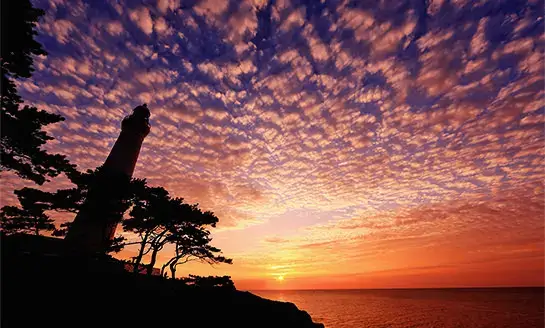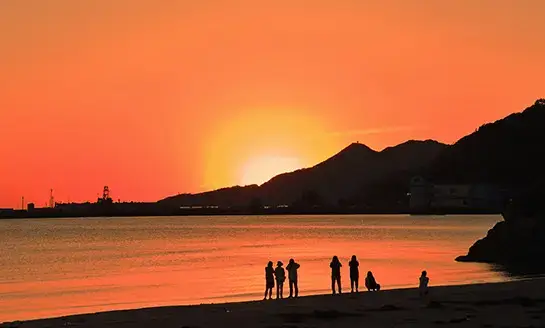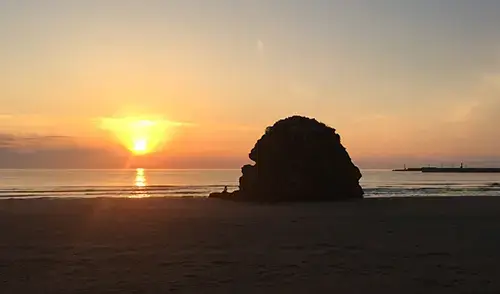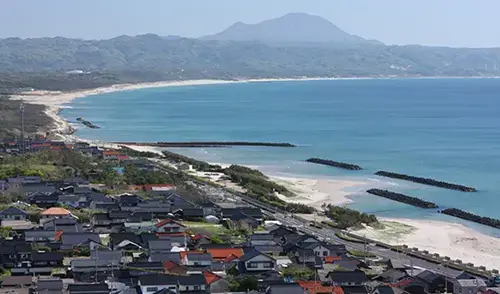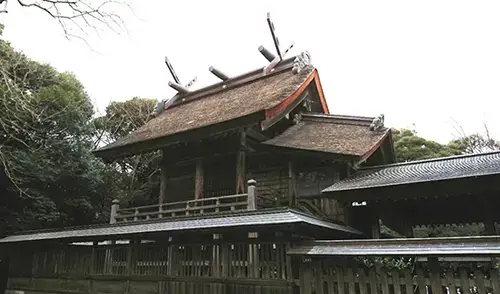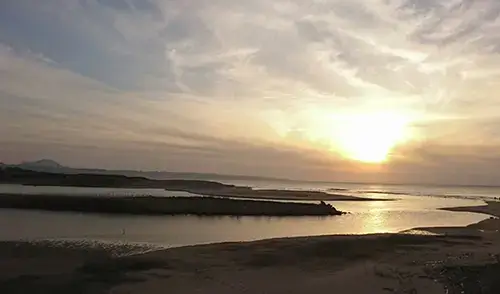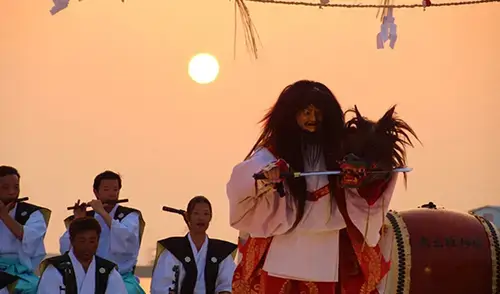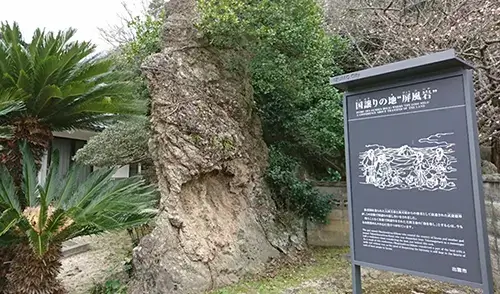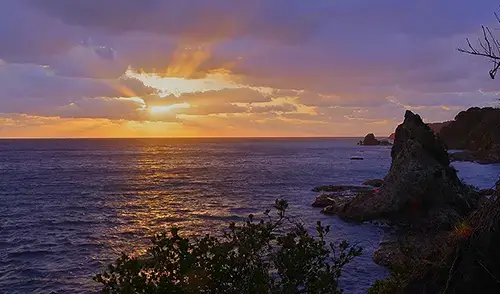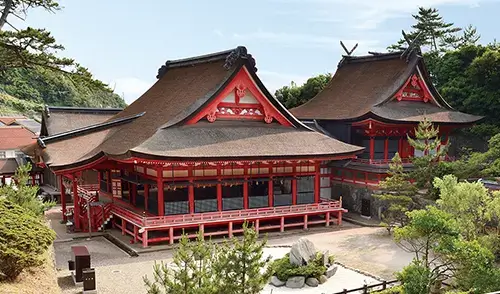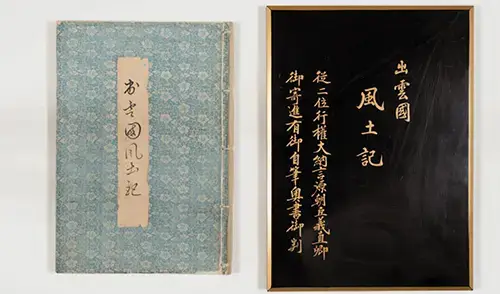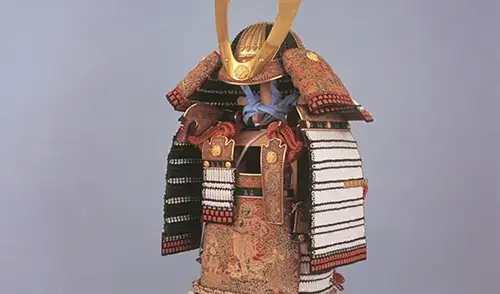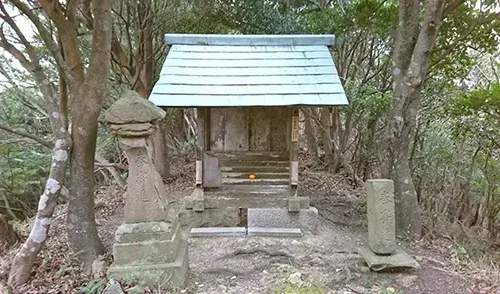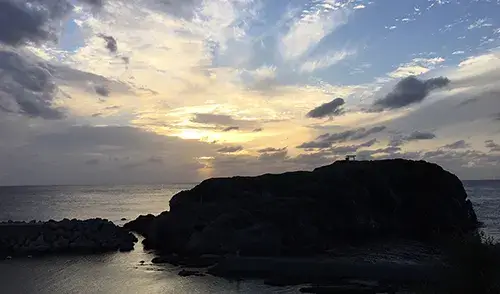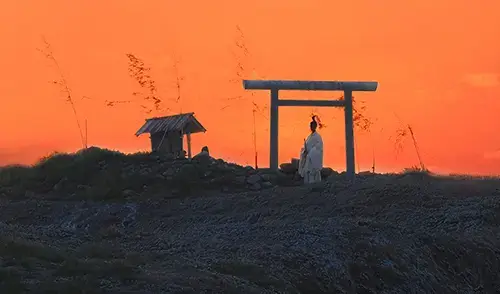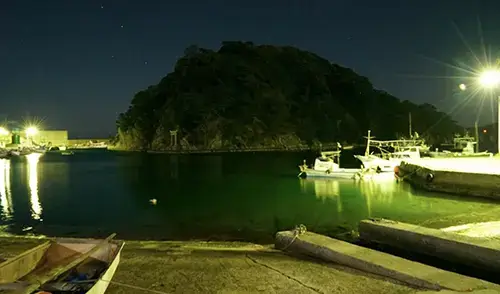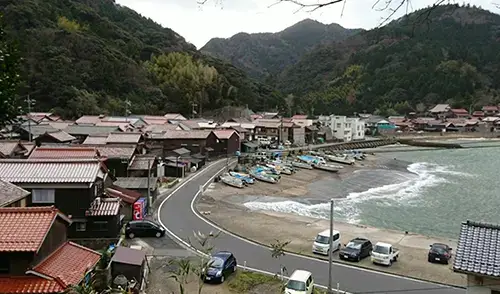日本遺産The Sunset in the Sacred Land of Izumo
- Japan Heritage
The shoreline at the west end of the Shimane Peninsula is well known as the setting of Izumo’s mythology. Located on this shoreline are Inasa no Hama Beach and Hinomisaki Cape, both of which offer magnificent views of the sunset. However, it is not widely known that Ame no Hisumi no Miya (Izumo Taisha Grand Shrine) and Hi Shizumi no Miya (Hinomisaki Shrine), both of which are closely associated to the sunset, are enshrined on this shoreline.
In ancient times, Izumo was recognized as a sacred place where the sun sets. People in Izumo considered the sunset sacred and prayed to it with awe. The tradition of celebrating the beautiful sunset over the sea has been passed down from generation to generation.
Japan Heritage:
Four stories about Izumo
![The Sunset in the Sacred Land of Izumo]()
The Shoreline Created by the Gods
In Izumo, if you look at the sky during the sunset hours you will be impressed by the beautiful light of the setting sun shining upon the city. This scenery hasn't changed since ancient times. What were people of ancient Izumo feeling when seeing the sunset at this time? And how has all of this been transmitted to us?
Let us guide you into the sacred land of Izumo and its sunset. 1300 years ago during the Nara period (710-794) the Izumo no Kuni Fudoki was written. This book is a record of the climate of this area and the lifestyle of people in Izumo. The first myth told in the book is the Kunibiki Legend (pulling together the land), where the giant god Yatsukamizuomizunu wanted to extend the narrow land of Izumo and drew lands beyond the sea using a giant rope while saying “Kuniyo, koi” (come here, land). Those new lands are said to be the rising mountains to the north of the Izumo Plain, and it is also said that the rope became the bow shaped beach to the west of the Izumo Plain.
This coastline shaped like a bow is a beautiful smooth and white sandy beach. But if you go north, at the foot of the mountain the dynamic landscape of the coast changes to a bare rock surface. Gazing at these beautiful landscapes, one thinks – indeed this land must have been pulled together by the strength of a god. Called Inasa no Hama and Hinomisaki, these spots are still beloved nowadays by many people as places where you can see beautiful sunsets on the Sea of Japan. Since ancient times the people of Izumo have been praying in awe and celebrating the setting sun in a shrine dedicated to it.
![Sunset of Inasa no Hama Beach and “Ame no Hisumi no Miya (Izumo Taisha Grand Shrine)”]()
Sunset of Hinomisaki Cape and “Hi Shizumi no Miya (Hinomisaki Shrine)”
The Hinomisaki Cape juts out into the Sea of Japan. It is notable for its rough seashore and all the unusual steep cliffs and stones combining into complicated patterns. Hinomisaki (literally the cape of the sun) has the Chinese character for the sun in its name and is known for being a place related to the sun since ancient times. During the Meiji Era (1868-1912) about 120 years ago, Izumo Hinomisaki Lighthouse was built, and the white building is still here today giving us this magnificent scenery. If you go to Hinomisaki you will see that behind the lighthouse the setting sun dyes the rough seaside in shades of red. A truly picturesque scenery.
Another famous place nearby is Hinomisaki Shrine, which is painted vermilion red, a rare type of shrine in Izumo. Here, Susanoo, the god who controls the sea is revered at Kami no Miya (the Upper Shrine) and Amaterasu, the goddess of the sun is enshrined in Hi Shizumi no Miya (the Shrine of the Setting Sun, the lower shrine). Generally Amaterasu is a symbol of the rising sun, but here in Izumo she is a symbol of the setting sun, which is very unusual.
In the forest to the southeast of Hinomisaki shrine is Tsukiyomi Shrine. The god enshrined here is Tsukuyomi, the opposite of Amaterasu, as he is the god of the night. When together with Susanoo these three are called the three main Shinto gods, Mihashiranouzunomiko. As his brother and sister do, Tsukuyomi is also here to protect the sunset. On the west side of Hinomisaki is Fumishima Island. It was named like this (“fumi” means sutra and “shima” means island) because the island looks like a piled up collection of Buddhist sutra scrolls. From spring to summer, black-tailed gulls (umineko) can be seen flying over the island, contributing to the beauty of the sunsets.
Every year on the 7th of August, the Miyuki Shinji Ritual is held in the setting sun on this island, which is closed to the public as a sacred place. Only the priests of Hinomisaki Shrine are allowed to go for this ritual.
Related Experiences
![Sunset of Hinomisaki Cape and “Hi Shizumi no Miya (Hinomisaki Shrine)”]()
Sunset of Inasa no Hama Beach and “Ame no Hisumi no Miya (Izumo Taisha Grand Shrine)”
In the twilight of a sunny day, the sky above Inasa no Hama Beach turns crimson, and the silhouette of Bentenjima Island lying on the shore comes sharply into view.From this place and the shore stretching to the south, as far as the eye can see, you can admire the magical panoramic scenery of this deep red light melting into the sea. Inasa no Hama is a famous place in Japanese mythology, as it is said to be the stage of the Kuniyuzuri Myth (Transfer of the Land).
The Kuniyuzuri Myth is written in two of the most ancient Japanese records, the Kojiki (Records of Ancient Matters) and the Nihon Shoki (The Chronicles of Japan). The legend tells that Amaterasu, goddess reigning over Takamagahara (heaven) the world of the gods, said that the world ruled by Okuninushi on earth must be ruled by her children. Okuninushi agreed to hand over the land and in exchange for that a palace as high as the heaven of the gods was built.
This palace is said to be Izumo Taisha Grand Shrine, which appears in the Nihon Shoki under the name Ame no Hisumi no Miya (the sunset shrine). From this name we came to understand that Izumo has been considered a “sacred place where the sun sets” since ancient times.
Inasa no Hama is also a sacred place where we welcome the gods. Even now, every year on the 10th day of 10th month of the ancient lunar calendar (around November), Izumo Taisha holds the ritual of the welcoming of the gods, where we wait for the sun to set and the myriad gods from all over Japan to gather for a meeting in order to discuss human matters and bonds (enmusubi). From a long time ago, those thoughts about the sunset have been handed down without ever dying out.
Related Experiences
![The Sunset in the Sacred Land of Izumo]()
The Sunset in the Sacred Land of Izumo
A long time ago, when the political power was concentrated in Yamato (the current Nara prefecture), where the sun sets in the northwest direction (towards Izumo), it seems that Izumo was thought to be “the faraway place where the sun sinks into the sea, leading to another world”. It may be because Izumo was viewed by people of ancient times as the place where the sun sets that the Kojiki and the Nihon Shoki, ancient records of Japan, describe Izumo as the place connecting our world to the next.
“Banjimashite” is a dialectal word from Izumo, a greeting for when the evening is coming. It is used between “konnichiwa” (good day) and “konbanwa” (good evening) and you won’t hear it much in any other area of Japan. The spirit of embracing special feelings towards the sunset lives on in Izumo’s people. The coastline and the sunset show us quiet and violent faces. Those faces interweaving, people who lived in Izumo must have felt that the beauty of the landscapes at sunset were created by gods.
Related Experiences
Japan Heritage in Izumo
![Inasa no Hama Beach]()
Inasa no Hama Beach
This beautiful sunset panorama is one kilometer to the west of Izumo Taisha Grand Shrine. It is also the stage for many famous scenes in Japanese mythology.
![Sono no Nagahama Beach]()
Sono no Nagahama Beach
A 10-kilometer sandy beach mentioned in the Kunibiki legend (pulling together the land) from the Izumo no Kuni Fudoki book (fudoki is a type of record that contains a description of the natural features, culture and history of a certain region). From the observation deck of Mount Hounou, you can see the view as it was described in the myths 1300 years ago.
![Nagahama Shrine]()
Nagahama Shrine
The god Yatsukamizuomizunu is worshipped here. He appears in the Kunibiki myth in Izumo no Kuni Fudoki, as the god who created the land. He blesses sports games and other competitions.
![Kandogawa River]()
Kandogawa River
Since ancient times, this river's estuary has served as a gateway to the sea of Izumo, connecting the Sea of Japan and the inner harbor of the Izumo Plain, and welcoming many people and ships.
![Izumo Taisha Grand Shrine]()
Izumo Taisha Grand Shrine
In the Kojiki (Records of Ancient Matters), the most ancient records of Japan, and in the Nihon Shoki (Japanese Chronicles), the Kuniyuzuri myth tells that this palace was built in exchange for Okuninushi to hand over the land to the gods. Its other name is Ame no Hisumi no Miya. In the center of the solemn main hall, the main deity, Okuninushi, faces the west, the direction of the shore.
![Kamimukae Shinji]()
Kamimukae Shinji
This shinto ritual is held at Inasa no Hama beach on the evening of the 10th day of the 10th month of the ancient lunar calendar. The ceremony welcomes the myriad deities of all Japan who come to Izumo to discuss human matters and bonds (enmusubi).
![Kami no Miya Shrine]()
Kami no Miya Shrine
It is said that gods from all over Japan gather here during the 10th month of the ancient lunar calendar to have a meeting called Kamihakari, where they discuss and decide human matters and bonds.
![Odochi Kagura]()
Odochi Kagura
A kagura dance performed in the Izumo region for more than 300 years. Besides performances held during the festivals of local shrines, every year at the end of May on Inasa no Hama beach, the Yukoku Kagaribi Mai dance is held to showcase this traditional dance.
![Byobu iwa]()
Byobu iwa
A rock shaped like a folding screen near Inasa no Hama beach. It is said that here, in the shade of the rock, Okuninushi held the talks about handing over the land.
![Fudenagejima Island]()
Fudenagejima Island
A folk tale says that during the Heian Period (794-1185) an artist wanted to paint this island, but was unable to depict the beauty of this landscape changing every minute, so he threw his brush away. This story gave the island its name, Fudenagejima, literally meaning "Throw Brush Island."
![Tsubute iwa]()
Tsubute iwa
In the Kuniyuzuri myth depicted in the Kojiki, the son of Okuninushi and a warrior sent by goddess Amaterasu had a contest to compare their strength. But according to the local tale, their strength was evenly matched, and as a result all the stones they were throwing ended up at the same place, creating this little rocky island, called Tsubuteiwa (thrown away stones).
![Izumo Hinomisaki Lighthouse]()
Izumo Hinomisaki Lighthouse
This white lighthouse is the symbol of Hinomisaki. It has been protecting the boats navigating here for more than a hundred years. You can climb to the observation deck at the top of it and enjoy the great panorama (it costs 200 yen to climb).
![Hinomisaki Shrine]()
Hinomisaki Shrine
Two shrines are here, the Kami no Miya (upper shrine) where the god of seas and storms Susanoo is revered, and the Hi Shizumi no Miya (lower shrine, "the sunset shrine") where the goddess of the sun Amaterasu is revered. The bright vermilion and white colors of the shrine offer a beautiful scenery.
![“Izumo no Kuni Fudoki,” owned by Hinomisaki Shrine]()
“Izumo no Kuni Fudoki,” owned by Hinomisaki Shrine
The Izumo no Kuni Fudoki is a book written 1300 years ago, describing precisely the life of the people leaving in this land at the time. The Izumo no Kuni Fudoki is the only book of its type with its records almost complete. One of the manuscripts was offered to Hinomisaki Shrine in 1634 and has been kept there since.
![Shiroitoodoshiyoroi Armor, helmet and shoulder guards with white lacing]()
Shiroitoodoshiyoroi Armor, helmet and shoulder guards with white lacing
Designated as a National Treasure, this white armor is kept in Hinomisaki Shrine. It was offered to the shrine by a general 700 years ago.
![Tsukiyomi Shrine]()
Tsukiyomi Shrine
On the top of the mountain located to the south east of Hinomisaki Shrine is another shrine where the god Tsukuyomi, brother of Amaterasu and Susanoo, is enshrined. It is rare to have the three main Shinto deities worshipped in shrines next to each other.
![Fumishima Island]()
Fumishima Island
The former location of the Hi Shizumi no Miya of Hinomisaki Shrine, it is forbidden to go to this sacred island. It was named Fumishima (“fumi” means sutra and “shima” means island) because the shape of the island looks like an accumulation of Buddhist sutra scrolls. It is also a breeding place for black-tailed gulls (umineko) where thousands of them come bustle in every year.
![Miyuki Shinji]()
Miyuki Shinji
This shinto ritual is held by Hinomisaki Shrine every year on the evening of the 7th of August. While the sun is setting, priests cross over to Fumishima Island where they hold the ceremony. Another name for this ritual is the "Festival of the Sunset," and it offers a beautiful sight.
![Uryu]()
Uryu
A quiet port town east of Hinomisaki. From the end of the 15th century until the 19th century, it was a flourishing trading port with favorable wind for sailboats.
![Gongenjima Island and Kumano Shrine]()
Gongenjima Island and Kumano Shrine
This island is located in the port of Uryu and hosts Kumano Shrine. Every year on the 5th day of the 1st month of the ancient lunar calendar, the mekari ritual (seaweed harvesting) is held on this island and opens the season for harvesting seaweed, which is a local delicacy of Hinomisaki.
![Sagiura]()
Sagiura
A little port town located just north of Izumo Taisha Grand Shrine. Once, it was as flourishing as Uryu was, with a favorable wind for sailboats. Every year on the evening of July 31st, the Gongen Festival is held, where locals wish for abundant fishing and safe seas. Lit from behind by the setting sun with flags fluttering in the wind, the fishermen's boats circle Kashiwajima Island, offering us a beautiful scenery.
![Inome Cave]()
Inome Cave
A cave facing the Sea of Japan. During ancient times it was used as a cemetery and the bones of at least 20 humans were discovered here. It is said that it could be the place described in the Izumo no Kuni Fudoki as the Yomi no Ana, the door leading to the next world.
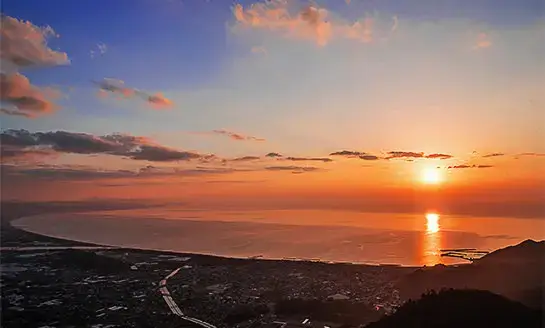
 />
/>

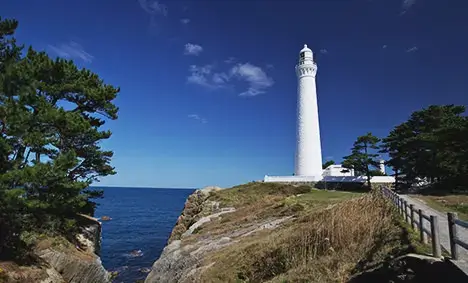 />
/>
